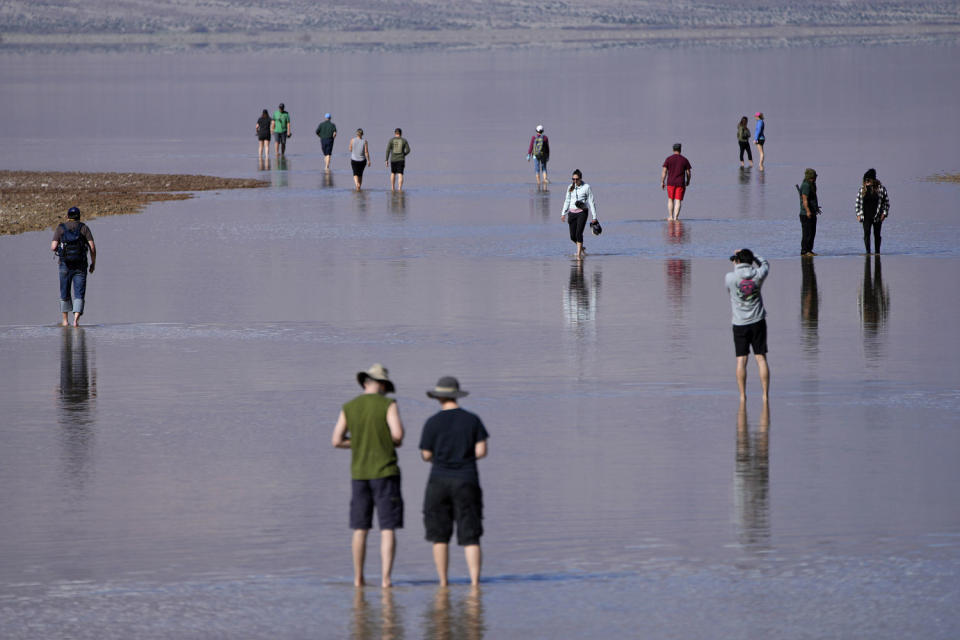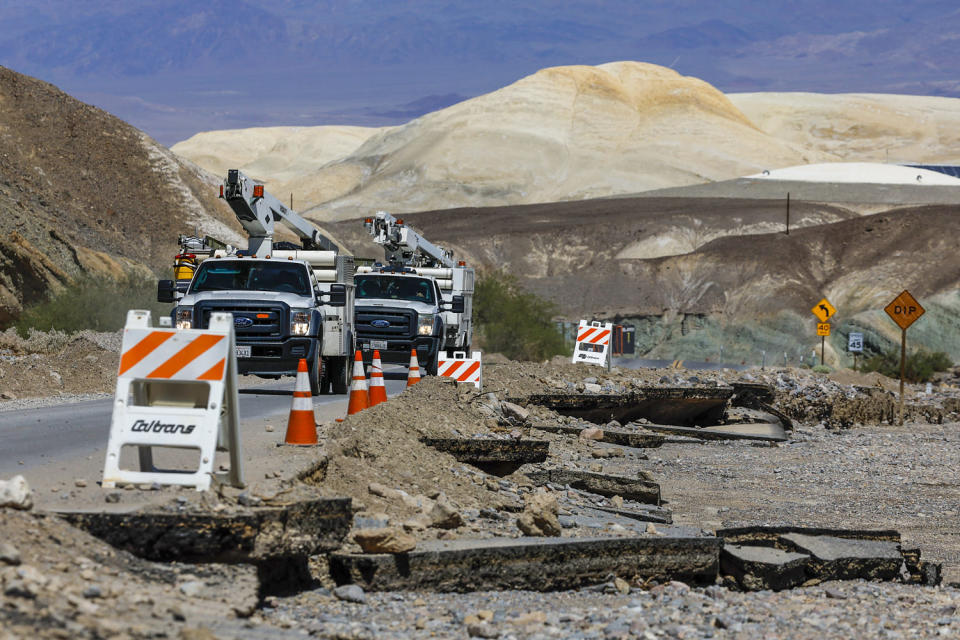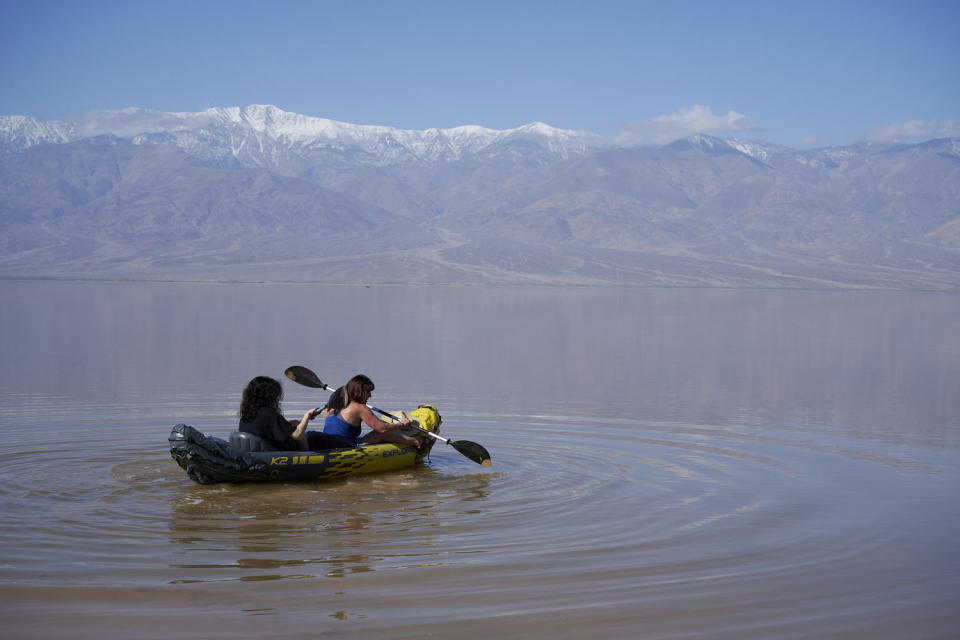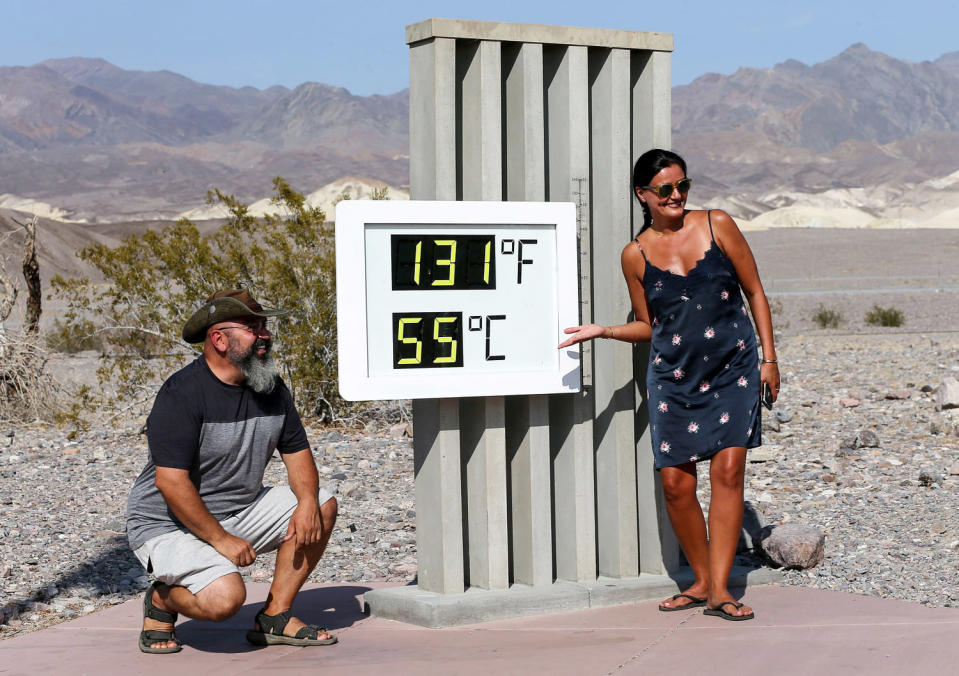In California’s booming climate, Death Valley has produced some of the strangest scenes in recent years.
Some of the area’s remaining creosote bushes died back during a severe drought that hampered the region until 2022. Then heavy rains – from the remnants of Hurricane Hilary and subsequent storms – revived the annual wildflowers from seed this past year.
During the winter, extreme rainfall revived an ancient lake that is now disappearing again.
Together, these extremes have created bizarre juxtapositions in the famous desert.
“I could take you to a field of dead creosote bushes with beautiful wildflowers springing up among them,” says Patrick Donnelly, a conservation biologist at the Center for Biological Diversity. “For a plant, it’s a post-apocalyptic wasteland – everything is dead – and then spring comes and flowers sprout among the corpses.”

Climate scientists have long predicted that global warming would both worsen droughts in California’s inland deserts and intensify rainfall. Death Valley locals say they watch that dynamic game in real time. How desert plants, animals and local economies adapt to the changes in an environment that is already one of the most extreme on Earth will determine the future of this symbol of resilience.
“It’s interesting to have a front row seat,” Donnelly said. “This is the hallmark of climate chaos.”
A 1 in 1000 year storm – twice
Susan Sorrells, owner of the ecotourism town of Shoshone, near Death Valley National Park, said the area’s weather “is always a roller coaster ride.”
But that is especially true in the last few years. In early 2022, Death Valley, like the rest of the American Southwest, remained mired in its driest period since the year 800. During the 22-year drought, soil moisture reached historic lows. Plants wilted, including the creosote bush, which is known to survive for thousands of years, thanks to deep roots that search for water and can survive on very little.
So its death during drought was a testament to the severity of the weather.
“Desert shrubs are very tough and die slowly,” says Lynn Sweet, a research ecologist at the University of California Riverside. “But at a certain point there is mortality.”
Then a flood came in August of that year.
Within hours, Death Valley National Park received a record 1.5 inches of rain – about three-quarters of the average annual total. The 1-in-1,000-year storm, as weather forecasters would later call it, washed away park roads, moved boulders and trapped cars in the rubble.
About a year later, the remnants of Hurricane Hilary, a rare Pacific hurricane, dumped 2.5 inches of rain in the park – more than the typical annual rainfall in a single day and a new 24-hour record.
“To have the worst drought in history and the most precipitation in history, it’s clearly climate whiplash,” Donnelly said.


The rain closed the park, as well as Highway 127, which connects it to gateway communities, but had become “a raging river,” Sorrells said.
She operates an ecotourism business with a 20-bed inn, hiking trails, a trading post, an RV park and the Crowbar Cafe and Saloon. For Sorrells, the situation was dire, as highway reconstruction would take all winter and spring, making the area nearly impossible to access during the busy season.
“We have a local joke: We make all our money from October to the end of April, and then we lose it from May to September,” she said.
The community came together and urged state leaders to accelerate the project, Sorrells said. The park partially reopened in October and the highway in January.
Then things took a fascinating turn.
Spring wildflowers that germinated in the fall survived a warm winter, when freezing temperatures would normally knock them back down, Donnelly said. And in February, a multi-day atmospheric river storm system brought another deluge.
The wildflowers “lasted long enough for the atmospheric river to charge them with all this rain,” Donnelly said. “Now they grow in a very unusual way. They are much larger than normal, have much thicker stems and are very robust wildflowers.”
There was also enough water to revive Lake Manly, an ancient lakebed usually filled with dust.
For the first time, the National Park Service announced in February that kayakers would be able to paddle on the lake, which NASA said was up to three feet deep.


“People really went for the sensational and fell in love with the beauty, charm and uniqueness of the desert,” Sorrells said. “We just started growing so much that we could barely keep up with the business.”
Dry climate, flashy weather
Most climate models expect California’s deserts to become drier over time, but also that rare storms will be more intense because a warmer atmosphere can hold more energy and water.
“Flasher storms, longer droughts,” Sweet said.
For some, the past few years have felt like a test drive in a new reality.


Many desert species go dormant or hibernate during drought, which can make wet years seem like a relative spectacle of color and activity.
The Mojave desert tortoise, for example, endures drought in underground burrows. Female turtles can store and store sperm for years for when the climate is just right to fertilize their eggs.
Some hard-coated desert wildflower seeds can last hundreds of years until the right conditions arise.
“Death Valley is very extreme. You have to assume that plants and animals have adapted to the edges of what is livable there. As it gets warmer, that becomes more of a challenge,” Sweet said.
Now the rain brings renewal.
New shrubs are emerging, Sweet said, although they need a “nice run of wet years” to survive. Wildflowers feed harvester ants, which feed lizards, which feed coyotes and other species.
“We hope that the increase in resources will work its way up the food chain,” Sweet said.
In a future that looks hotter and drier, such breaks will be essential: “Hopefully we get these recovery periods of precipitation to replenish the seed bank and energy reservoir of the entire ecosystem.”
This article was originally published on NBCNews.com